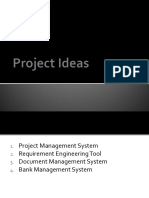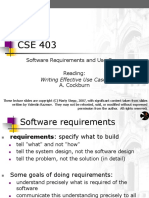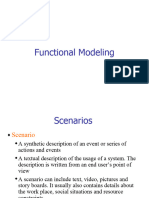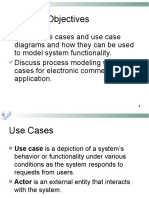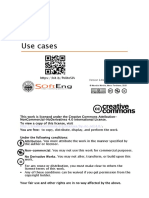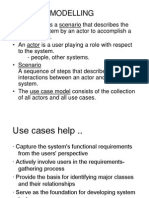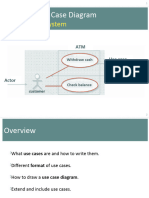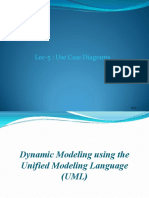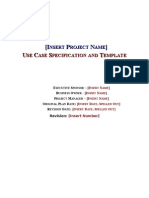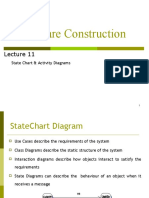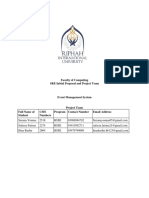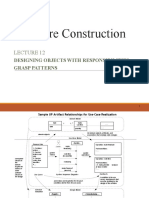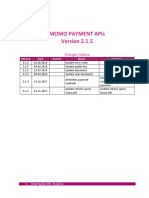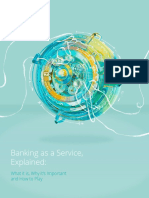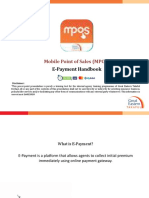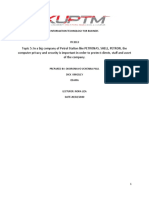0% found this document useful (0 votes)
80 views65 pagesSoftware Construction: Inception Phase Understanding Requirements Use Case Modeling
This document discusses the inception phase of software construction. The inception phase is an initial short step to establish a common vision and basic scope for a project. Important artifacts created during inception include a vision document, use case model identifying all use cases and analyzing 10% in detail, supplementary specifications, and a glossary. Understanding requirements is also discussed, including defining functional and non-functional requirements. Use case modeling is introduced as a way to identify functional requirements by describing interactions between a system and external actors to fulfill goals.
Uploaded by
Suzana YounasCopyright
© © All Rights Reserved
We take content rights seriously. If you suspect this is your content, claim it here.
Available Formats
Download as PPT, PDF, TXT or read online on Scribd
0% found this document useful (0 votes)
80 views65 pagesSoftware Construction: Inception Phase Understanding Requirements Use Case Modeling
This document discusses the inception phase of software construction. The inception phase is an initial short step to establish a common vision and basic scope for a project. Important artifacts created during inception include a vision document, use case model identifying all use cases and analyzing 10% in detail, supplementary specifications, and a glossary. Understanding requirements is also discussed, including defining functional and non-functional requirements. Use case modeling is introduced as a way to identify functional requirements by describing interactions between a system and external actors to fulfill goals.
Uploaded by
Suzana YounasCopyright
© © All Rights Reserved
We take content rights seriously. If you suspect this is your content, claim it here.
Available Formats
Download as PPT, PDF, TXT or read online on Scribd
/ 65



